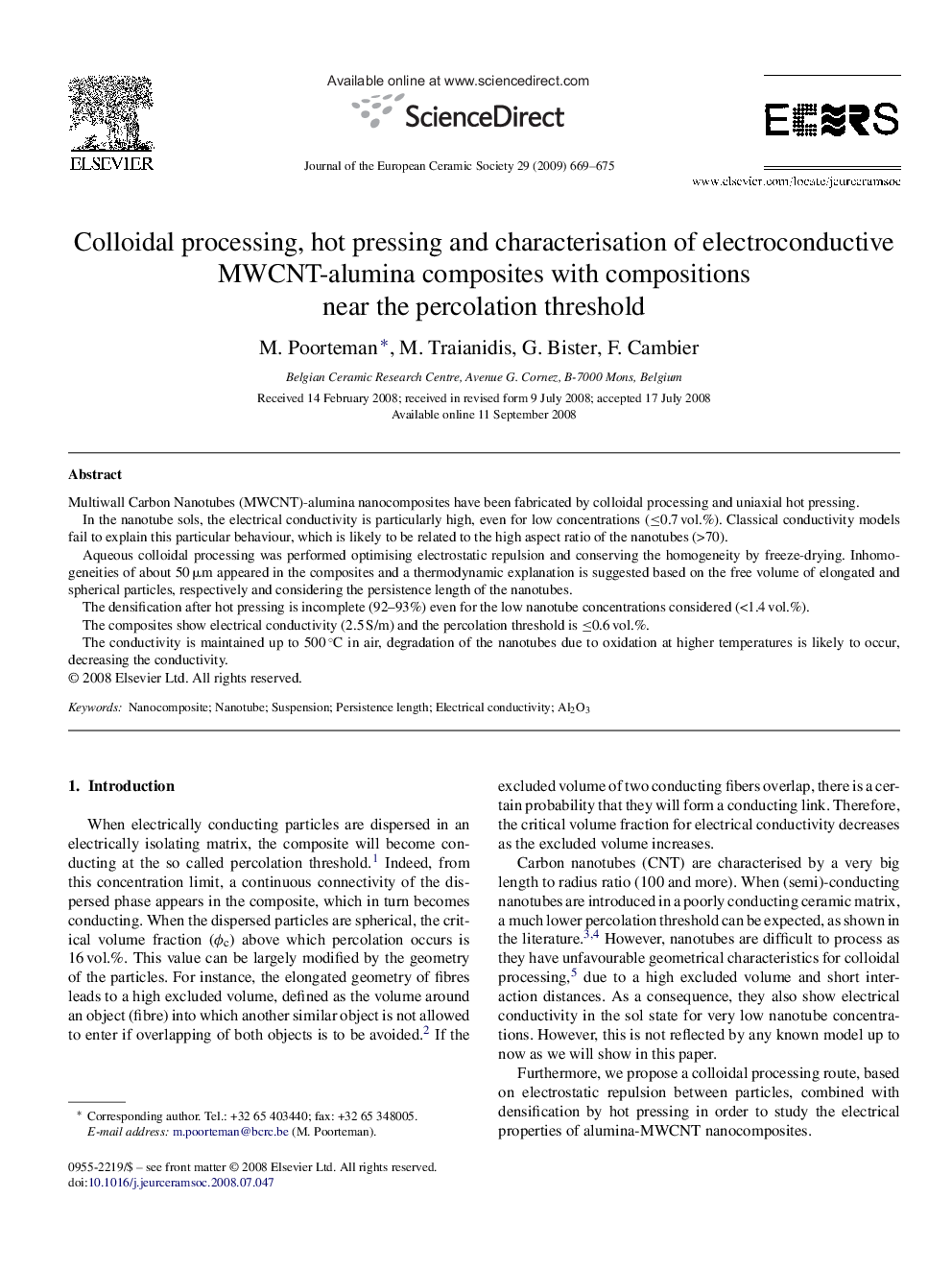| Article ID | Journal | Published Year | Pages | File Type |
|---|---|---|---|---|
| 1476918 | Journal of the European Ceramic Society | 2009 | 7 Pages |
Multiwall Carbon Nanotubes (MWCNT)-alumina nanocomposites have been fabricated by colloidal processing and uniaxial hot pressing.In the nanotube sols, the electrical conductivity is particularly high, even for low concentrations (≤0.7 vol.%). Classical conductivity models fail to explain this particular behaviour, which is likely to be related to the high aspect ratio of the nanotubes (>70).Aqueous colloidal processing was performed optimising electrostatic repulsion and conserving the homogeneity by freeze-drying. Inhomogeneities of about 50 μm appeared in the composites and a thermodynamic explanation is suggested based on the free volume of elongated and spherical particles, respectively and considering the persistence length of the nanotubes.The densification after hot pressing is incomplete (92–93%) even for the low nanotube concentrations considered (<1.4 vol.%).The composites show electrical conductivity (2.5 S/m) and the percolation threshold is ≤0.6 vol.%.The conductivity is maintained up to 500 °C in air, degradation of the nanotubes due to oxidation at higher temperatures is likely to occur, decreasing the conductivity.
